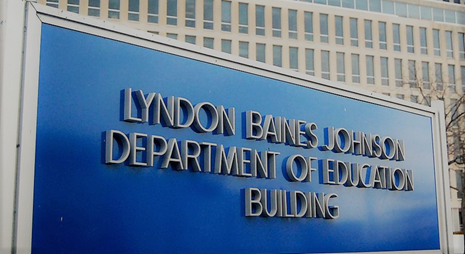Voters to decide whether governor will appoint future state superintendents of education – By Mollie
R. Simon, The Anderson (SC) Independent Mail
South Carolina voters will determine how future state superintendents of education will reach their position on Nov. 6.
Ballots in the general election will ask whether the state superintendent of education, who has been elected, should instead be appointed by the governor and confirmed by the state Senate.
In order to make it on the ballot, the proposed change passed the senate 38 to 6 in the last minutes of the 2017-18 legislative session.
If voters approve the measure, the first appointed superintendent would take office in 2023. That would mean the winner of this year's race for the position would complete the next four-year term.
Efforts to make state superintendent of education an appointed position have been underway for decades. In 2014, the South Carolina School Board Association supported conducting a statewide referendum on the issue.
South Carolina remains one of only 13 states in which the position is an elected office.

U.S. Department of Education Is Sued For Withholding Information On Arming Teachers – By Rebecca Klein, The Huffington Post
A coalition of advocacy and teacher groups sued the U.S. Department of Education on Wednesday morning for information related to its decision to allow schools to purchase firearms using federal funds.
The American Federation of Teachers, the Southern Poverty Law Center and the Giffords Law Center to Prevent Gun Violence say the Education Department is violating federal law by not releasing records related to the decision in a timely manner.
In August and September, the groups filed two Freedom of Information Act requests for more information on the decision. The requests, filed on behalf of the groups by Democracy Forward, were designed to glean information on issues such as whether the Education Department was influenced by the National Rifle Association and other gun rights groups. A request also sought information on which school districts were interested in arming teachers using federal funds.
The government is required to determine whether to comply with a FOIA request within 20 days. But according to the lawsuit, also filed by Democracy Forward, the government has fallen short of its statutory obligation. The plaintiffs are requesting expedited processing of their information request, which the government previously denied.

Homelessness in New York Public Schools Is at a Record High: 114,659 Students – By Eliza Shapiro, The New York Times
Tonight, about one out of every 10 students in New York City will sleep in a homeless shelter or in the homes of relatives. That’s more children than at any other time since city records have been kept. In the morning, those same children will fan out across the city to go to school, some crossing multiple boroughs to get there.
Last year, the number of city students in temporary housing topped 100,000 for the third consecutive year, according to state data released Monday by Advocates for Children of New York, a group that provides legal and advocacy services for needy students.
Those students are the most vulnerable victims of homelessness, an issue that has dogged Mayor Bill de Blasio since he took office in 2014. But as the number of homeless children continues to swell, there hasn’t been a significant increase in public or private dollars spent to support these students.
The number of school-age children who are homeless has sharply increased in the last eight years along with a rise in homelessness over all. As politicians debate policy solutions, the number of students in temporary housing has ballooned to 114,659 students as of last spring, from 69,244 children in 2010.
That’s more homeless students in New York City than the population of Albany.

Cal State graduation rates reach record highs and equity gaps narrow – By Teresa Watanabe, The Los Angeles Times
Graduation rates for California State University students hit record highs this year as campuses poured money into new faculty and expanded academic support and financial aid, university system officials announced Wednesday.
Just more than a quarter of all Cal State students who started as freshmen four years ago graduated this year.
The nation’s largest and most diverse public university system also narrowed the persistent gap in graduation rates between low-income and underrepresented minority students and their peers.
The progress is “revolutionary stuff in our quest to enhance student achievement,” Cal State Chancellor Timothy P. White said at a symposium on improving graduation rates Wednesday at San Diego State. “We believe any student, regardless of the circumstance of their birth and their life, who has the intellect and willingness to do the work will get a degree from the California State University if they have the courage to apply to us.”
Cal State organized the gathering as part of its ongoing initiative, launched in 2016, to raise four-year graduation rates to 40%, six-year rates to 70% and eliminate all differences in degree completion among underrepresented minority and low-income students by 2025.












